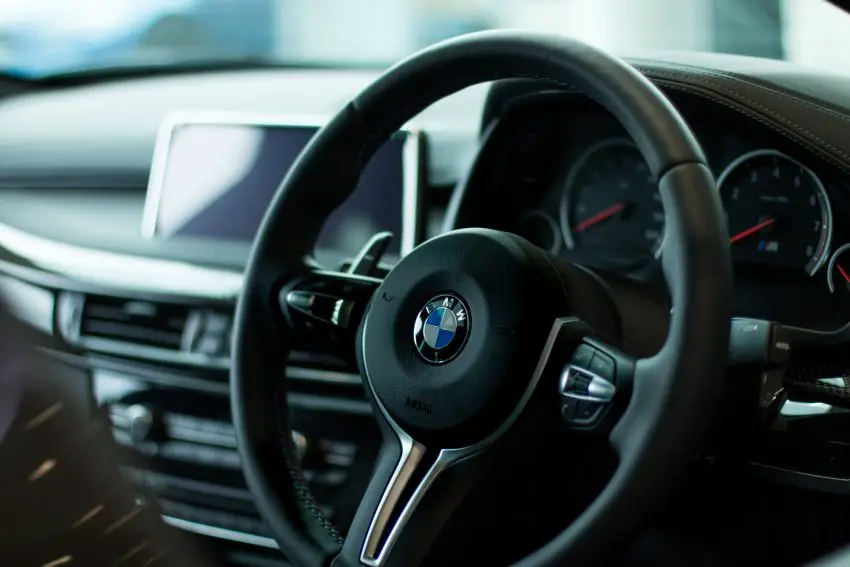In 2016, almost 12.5 million large commercial trucks and buses were registered. Within the same timeframe, these heavy-duty vehicles logged over 300 billion vehicle miles combined.
When you’re in the market for a new business vehicle, company decision-makers are often faced with a common problem:
There are a lot of commercial vehicles out there to choose from.
Depending on your work situation, a high-profile vehicle might be the best choice available. But between the warning signs on highways and the “Only Below This Height” signs on overpasses, you may be wondering if a high-profile vehicle is worth getting.
If you want to know about the benefits of high-profile commercial vehicles, you’ve come to the right place. Once you’re done reading this, you’ll understand what high-profile vehicles are and how they can help your business. Then, we’ll talk about how you can get more use out of your high-profile commercial vehicle.
Sound good? Read on.

Contents
Defining High-Profile Vehicles
If you were to ask 10 people to define the term “high-profile vehicle”, you’d probably hear at least 20 different answers. Some people swear that mini-vans and SUVs are high profile. Others will picture Lamborghinis and Ferraris when they hear the “high-profile” descriptor.
Who’s right?
In the broadest of terms, high-profile vehicles are vehicles that take up a lot of surface area. Think dump trucks, semis, or buses. But because these commercial trucks and vehicles are so common, you may be wondering if they really need their own category.
The answer to that question is, “Yes.”. Even though these vehicles are big and powerful, they are vulnerable to crosswinds and high-wind driving conditions. Here are some key characteristics that are common to high-profile vehicles:
1. They Sit High off the Ground
Imagine you’re an engineer who’s been asked to design a truck. You’re not going to be building it or anything. But because this truck will need to haul 40,000 pounds of cargo across America, the manufacturer wants a quick opinion and some napkin math.
After you figure out the size of the vehicle, there are two characteristics that you’ll likely pay attention to in this scenario:
- The wheels
- The suspension
This combination is a big part of what gives high-profile vehicles their characteristic height. The larger frame requires larger wheels. And to support the size and weight of the vehicle, a stronger suspension system is often needed as well.
2. They Have Broad Sides and Big Doors
What do armored vehicles, tractor-trailers, and semi-trucks have in common? If you took a ruler and measured the vehicle’s side, you’d be blown away at how tall these machines are relative to their length. Unsurprisingly, this next-level width contributes to the amount of surface area that high-profile vehicles are known for taking up.
3. They Have Huge Mirrors
When you’re driving a high-profile vehicle, navigation can be tricky at the best of times. Your suspension already gives you a bird’s eye view. And the size of your side profile means you have to be mindful when negotiating turns and tight spaces.
This combination of traits will give you a fantastic view from the front. But if a car is trying to pass you from behind, you might not be able to see it until it’s too late.
To help address these massive blind spots, high-profile vehicles will often have large mirrors. If you notice a truck with oversized mirrors the next time you’re out on the highway, you’re probably looking at a high-profile vehicle.
Recognizing the Different Types of High-Profile Vehicles
Of course, this list of characteristics means that there are a lot of vehicle types in the high-profile category. Some of these would include:
- Pickup trucks
- Sprinter vans
- Tractor-trailers
- Mobile homes
- SUVs
- Box trucks
- RVs
Before you start questioning whether SUVs and sprinter vans belong in the same group, it’s important to remember that high-profile vehicles exist on a continuum. Semis may be much higher profile than standard pickup trucks, for instance, but pickups can still be prone to rollovers on windy roads. If you’re planning to buy a vehicle for your business, these characteristics are important to keep in mind.
Benefits of High-Profile Vehicles for Businesses
So far you may have been reading along and building a general understanding of high-profile vehicles. And after all of that, you might be thinking, “What’s the appeal of a high-profile vehicle for a company like mine?”.
A lot of this is industry-specific. If you’re in trucking and logistics, for instance, a fleet of semis just makes sense. But for industries where the high-profile advantage is less obvious, there are still a few compelling reasons to give high-profile vehicles a try.
Here’s a list of four benefits that this type of vehicle can offer:
1. They Have a Lot of Storage Space
Whether you work in construction or you own a farm, there’s one thing that you can never have too much of on the job:
Time.
Everyone wins bids by talking about how they can transport goods faster and more efficiently than the next company. The more your team can accomplish on the worksite, the sooner you can wrap up and move on to your next project. And if you employ field technicians or people who spend a significant amount of time on the road, you need room for packed lunches, tools, and equipment.
High-profile vehicles are known for having lots and lots of space. This can directly save you time if you’re hauling such huge cargo loads that a semi-truck is your only option. But it can also help you out indirectly by allowing you to transport more equipment in fewer trips.
If your company wants to get more work done, a high-profile vehicle can quite literally give you the room you need to become more efficient.
2. High-Profile Vehicles Have Extremely High Towing Capacity
Imagine your company has been hired for a job. You’ve got all the usual equipment and tools, but you’ll need to move significantly more equipment than normal.
You could make multiple trips. Or, you could attach a trailer to your company vehicle and do it all in one trip. Which option do you choose?
With all cars, you have to be mindful of the weights involved if you’re planning to add a hitch. The vehicle must be able to carry its passengers, the items inside of it, and the item it’s towing at a minimum. Any adjustments to those three factors can drastically change your calculations.
High-profile vehicles are known for their powerful frames and strong suspension systems. This makes them an ideal choice for companies that do a lot of towing.
3. You Have a Lot of Options
Let’s say that your crew is traveling to another work site.
Your employees are probably going to pack up the equipment they need before they hop into the company vehicle and head to their next location. But despite what we said earlier about how high-profile vehicles are known for their storage space, you’re not stuck with a vehicle that’s all storage space with nothing in between.
Look at buses and cargo vans, for example.
What this means for businesses is that you can customize your high-profile vehicle purchase to a certain degree. If your staff members are commonly hitching rides with each other, you can buy a high-profile vehicle with a reasonable cab size. But if you tend to store important equipment in your vehicles, you can look for models that have a larger bed size.
At the end of the day, your business needs are unique to you. Because high-profile vehicles come in so many shapes and sizes, you can purchase what you need without having to make any compromises.
4. High-Profile Vehicles Tend to Have a High Payload Capacity
One of the biggest issues that companies face with their vehicles is figuring out how much is too much of a load. And while the occasional overload might not seem like a big deal in isolation, overloading can hurt your business operations in the long run.
Here’s why:
For starters, putting extra weight on a vehicle can cause steering and safety issues for your staff members. And for another, overloading can lead to rapid wear and tear on your tires.
So how were so many commercial vehicles able to clock about 40,000 miles each in 2016?
Chances are that these companies were paying special attention to the vehicle’s gross vehicle weight rating or GVWR. While that might sound fairly technical, GVWR refers to how much weight a vehicle can carry without running the risk of overloading.
When the cattle need to be transported within the next few weeks or the project will be delayed if the materials aren’t delivered soon, you don’t have the luxury of waiting around. High-profile vehicles are built to pull and carry large loads all at once.
If equipment and crew transportation are a regular part of your logistics discussions, high-profile vehicles can speed things up without putting the rest of your operations at risk.
Are High-Profile Vehicles a Rollover Hazard?
The short answer is “Yes.”. But the longer answer is worth providing.
As you know, part of what separates high-profile vehicles from their lower-profile counterparts is the fact that they have a lot of height. This makes them prone to rolling over in windy weather conditions.
But what exact features are making these titans of the road so accident-prone? There are two main causes:
1. Front Drag
NASA describes “drag” as a mechanical force that’s created when solid bodies have physical interactions with liquids or gasses. In scientific circles, drag is known to have a slowing effect.
Highway driving in a high-profile vehicle is a perfect example of this scientific concept in action.
Think of the last time you saw a semi-truck or a large RV up close. It’s hard to imagine anything more solid on a highway. Now think about how fast these vehicles are moving on the road.
These factors tend to make the effect of drag even stronger. When you have a large, fast-moving surface interacting with air head-on, things can get very dangerous within a short period of time.
2. The Tall Side Profile
The large side profiles associated with high-profile vehicles can come in handy if you need a bit of extra storage. But the height of these vehicles does have a navigational flaw:
It makes the vehicle an even larger target.
For this reason, high-profile vehicles are particularly vulnerable to strong crosswinds.
Questions to Ask When Purchasing a High-Profile Vehicle for Your Business
In one of our other articles, we spend a bit of time talking about how to choose a business vehicle. Factors we mentioned there include power, fuel efficiency, dependability, and price. We highly recommend that you read this post if you haven’t already.
Even so, however, purchasing a high-profile vehicle comes with its own unique concerns. There are at least three questions to ask yourself as you shop:
1. What Do I Need This Vehicle to Do?
Even if you incorporated your company yesterday, chances are that you’ve got a list of must-have qualities on your high-profile vehicle wishlist.
Maybe you need a truck that’s capable of hauling huge loads over long distances. Perhaps you need a balance of passenger space and storage space. Maybe you need a vehicle that you can customize.
This has real-world implications for your purchase.
If you’re primarily concerned with going to and from your latest job site, it may not make sense for you to purchase a semi.
This step might seem basic, but you’ll be surprised at how clarifying your needs at this stage can save you time later on.
2. What Kind of Licenses Are Needed to Drive This Vehicle?
Vehicle features can be useful and necessary while also being time-consuming and expensive to implement.
Take air brakes, for example.
In a heavy-duty work vehicle, air brakes have time-saving and life-saving potential. Not only are they easier to maintain overall, but it’s possible to drive safely with them even if the brake lines have sustained a minor leak.
So what’s the problem? You need an air brake endorsement on your license to drive these vehicles legally.
As you evaluate your options in the high-profile vehicle market, you’ll want to factor training and upskilling costs into your final calculations.
3. Will the Vehicle Pass Muster?
Imagine you’ve time-traveled a few months into the future.
You’ve purchased your truck. Maybe you’ve even done a few routes. And now it’s time for your annual DOT inspection.
Is this vehicle roadworthy? And in states that have stricter requirements for commercial vehicles, can this vehicle satisfy those standards?
If you’re purchasing a used vehicle for immediate use, these are important issues to consider.
Do High-Profile Vehicles Come With Tax Benefits?
Many people associate high-profile vehicles with tax advantages. But are these rumors based in fact?
According to the IRS, if you buy a commercial vehicle and use it exclusively for business reasons, you can deduct all of your ownership and operation costs. And even if you sometimes use the company car to make snack runs, you can still deduct your business use.
But that’s not the end of the story.
If you bought your car after September 27, 2017 and then started using it in 2021, the Sec. 280F depreciation schedule allows you to deduct:
- $18,200 in the first tax year
- $16,400 in the second tax year
- $9,800 in the third tax year
- $5,860 in the fourth tax year
Even if you’re not getting that first-year depreciation bonus, this schedule still allows for a pretty generous series of deductions. It’s just that instead of $18,200 in the first year, you’d be deducting $10,200.
Now here’s the part where the fun begins:
If you’ve purchased a vehicle that weighs between 6,000 and 14,000 pounds, you could be eligible for a $25,000 first-year deduction. This is what’s known as a Section 179 deduction. And this deduction is so powerful that we’ve even gone ahead and put together a list of Section 179-eligible vehicles for businesses.
Depending on the type of high-profile vehicle you purchase, you might be surprised at the tax benefits you can claim.
That being said, tax write-offs are always a hot topic for business owners. Everyone wants to make a little more profit, after all. We talk more in-depth about tax-deductible business expenses elsewhere, but here’s the bottom line when it comes to high-profile vehicles:
Commercial vehicle-related expenses can be factored into your tax returns. And if you’re looking to buy a large high-profile vehicle in particular, there may be additional tax benefits available to you. This is a fantastic way to get more money back in your pocket.
High-Wind Driving Tips
According to the experts, high winds are a hazard no matter the car you’re driving. But once the wind speed hits 60 mph, high-profile vehicles can run into serious trouble. Fortunately, we’ve got some safety tips for driving a high-profile vehicle in windy conditions.
1. Slow Down
Rollovers aren’t the only hazard associated with high-profile vehicles — a strong gust of wind could compromise the level of control you have over your vehicle. The benefit of slowing down is that you can lessen the impact of wind on your vehicle. This, in turn, can make it easier to maintain your grip on the steering wheel.
2. Give Your Vehicle a Once-Over
Imagine you’re driving a container truck with a tarp or a bunch of items in the back. If you’re on the highway and the covering loosens and blocks your view, you could be headed for trouble.
Any time that you’re about to hit the road, you’ll want to do a pre-driving inspection. Make sure your doors are secured and tie down any items that have the potential to get loose. When you’re driving a high-profile vehicle in windy conditions, you don’t want to leave anything to chance.
3. Look for High-Wind Warnings
By the numbers, Alaska, Wyoming, Michigan, and Montana are the windiest states in the country. However, high-wind advisories can happen anywhere. To avoid getting caught in windstorms while driving a high-profile vehicle, you may want to consider downloading a weather app.
This can let you know if high-wind warnings have been issued. And it can give you a chance to plan your route accordingly.
4. Be Aware of Your Load Size
If you put a piece of paper in front of a fan, the paper will likely blow around until it falls off the table. But if you put a rock on top of the same piece of paper, you’ll likely need something stronger than a table fan to blow the paper away.
Surprisingly, high-profile vehicles often function the same way in windy weather conditions. A truck that’s returning empty after making a delivery is more likely to be blown off the road. For this reason, your load size can have a profound effect on your safety risk if you’re driving in high winds.
5. Assess Your Surroundings
This one is often easier said than done. But it’s a piece of advice that could potentially save you a lot of grief.
For instance, did you know that bridges and open roads are risky to drive on in high-wind conditions? If you must drive during windy weather, you should consider taking a route that allows you to stay away from exposed areas.
6. Don’t Be Afraid to Pull Over
Let’s say you’re already on the road when things get windy. If the conditions are relatively mild, it may be okay to slow down and keep going. But if you’re in a high-profile vehicle and wind speeds are approaching 60 mph or more, you may want to pull over and wait the bad weather out.
At the end of the day, it’s better to be safe than sorry.
Are You Getting a High-Profile Vehicle for Your Business?
For many businesses, high-profile vehicles are worth exploring. These vehicles are tough, powerful, and able to get the job done. And because high-profile vehicles can haul big loads while carrying tools and equipment, they can be an invaluable part of your day-to-day operations.
Would you like to buy a high-profile vehicle? We’ve got an article for that! Check out our list of the 10 best Section 179-deduction vehicles available today.





